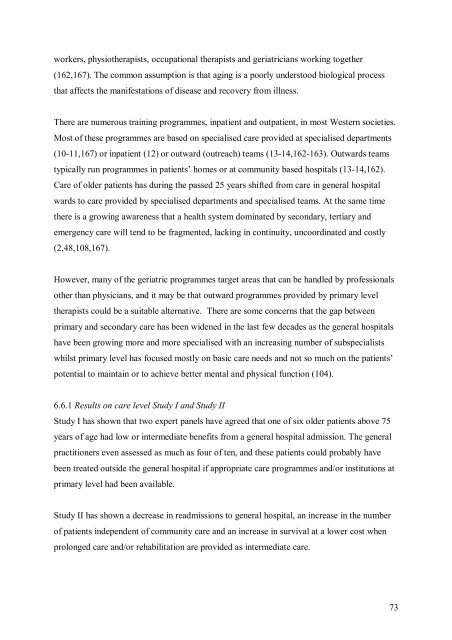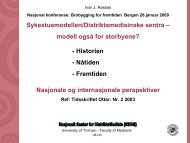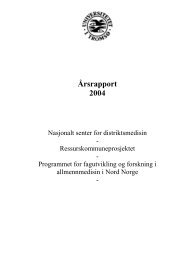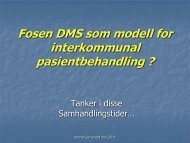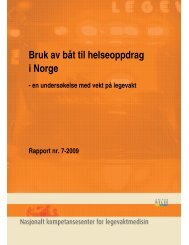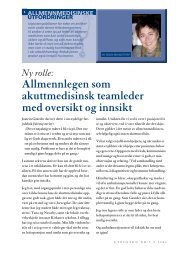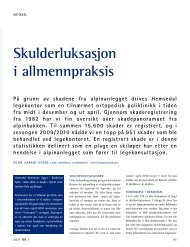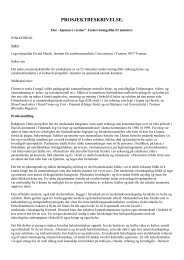Helge Garåsen The Trondheim Model - NSDM
Helge Garåsen The Trondheim Model - NSDM
Helge Garåsen The Trondheim Model - NSDM
Create successful ePaper yourself
Turn your PDF publications into a flip-book with our unique Google optimized e-Paper software.
workers, physiotherapists, occupational therapists and geriatricians working together<br />
(162,167). <strong>The</strong> common assumption is that aging is a poorly understood biological process<br />
that affects the manifestations of disease and recovery from illness.<br />
<strong>The</strong>re are numerous training programmes, inpatient and outpatient, in most Western societies.<br />
Most of these programmes are based on specialised care provided at specialised departments<br />
(10-11,167) or inpatient (12) or outward (outreach) teams (13-14,162-163). Outwards teams<br />
typically run programmes in patients’ homes or at community based hospitals (13-14,162).<br />
Care of older patients has during the passed 25 years shifted from care in general hospital<br />
wards to care provided by specialised departments and specialised teams. At the same time<br />
there is a growing awareness that a health system dominated by secondary, tertiary and<br />
emergency care will tend to be fragmented, lacking in continuity, uncoordinated and costly<br />
(2,48,108,167).<br />
However, many of the geriatric programmes target areas that can be handled by professionals<br />
other than physicians, and it may be that outward programmes provided by primary level<br />
therapists could be a suitable alternative. <strong>The</strong>re are some concerns that the gap between<br />
primary and secondary care has been widened in the last few decades as the general hospitals<br />
have been growing more and more specialised with an increasing number of subspecialists<br />
whilst primary level has focused mostly on basic care needs and not so much on the patients’<br />
potential to maintain or to achieve better mental and physical function (104).<br />
6.6.1 Results on care level Study I and Study II<br />
Study I has shown that two expert panels have agreed that one of six older patients above 75<br />
years of age had low or intermediate benefits from a general hospital admission. <strong>The</strong> general<br />
practitioners even assessed as much as four of ten, and these patients could probably have<br />
been treated outside the general hospital if appropriate care programmes and/or institutions at<br />
primary level had been available.<br />
Study II has shown a decrease in readmissions to general hospital, an increase in the number<br />
of patients independent of community care and an increase in survival at a lower cost when<br />
prolonged care and/or rehabilitation are provided as intermediate care.<br />
73


